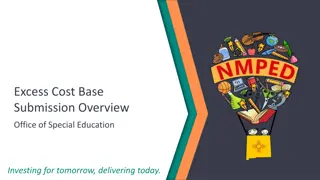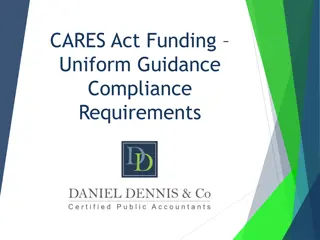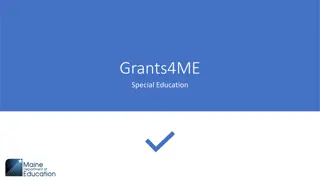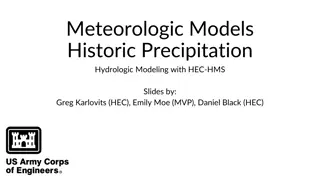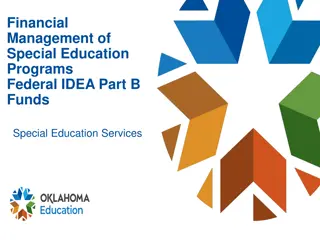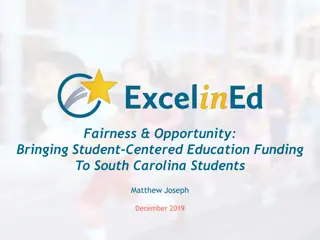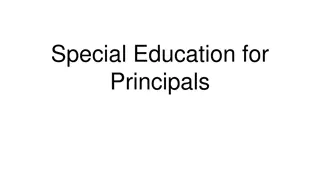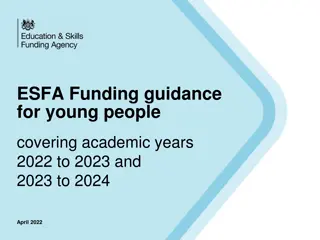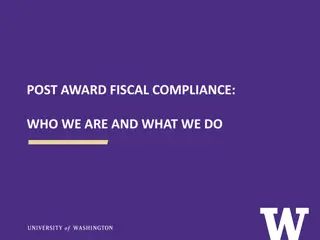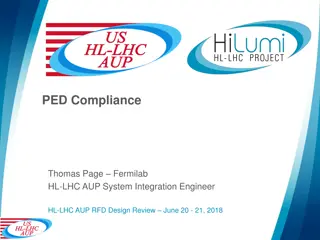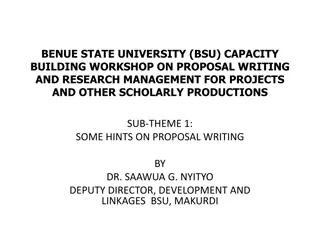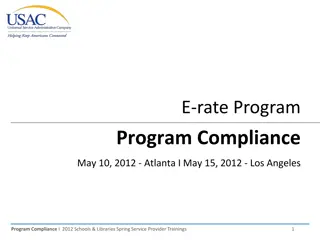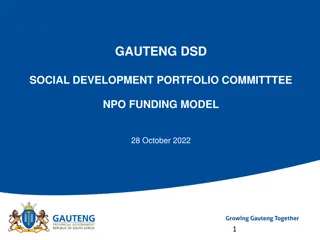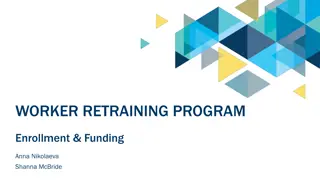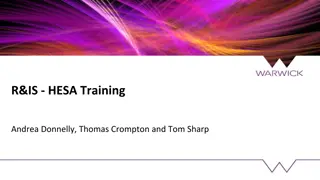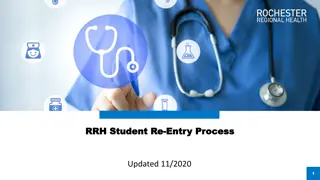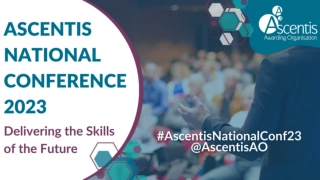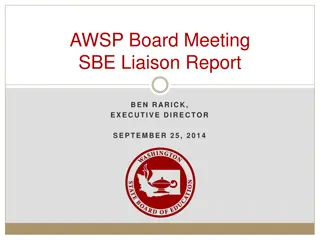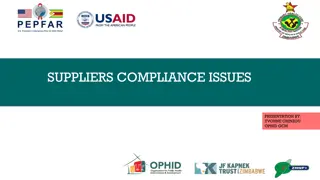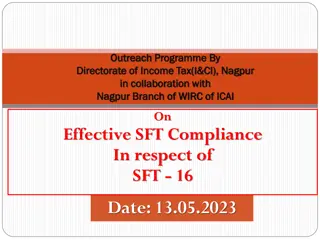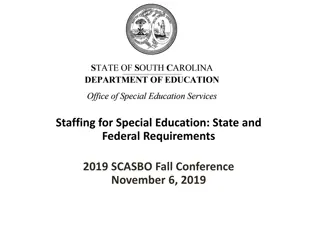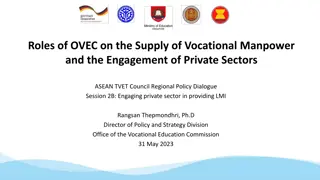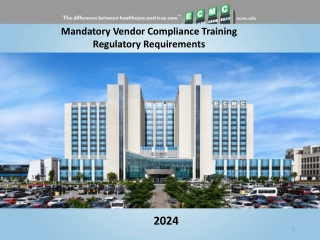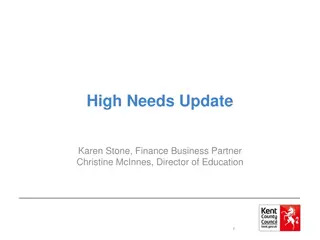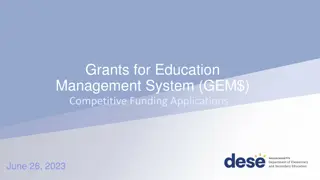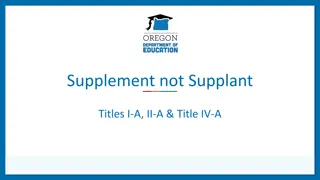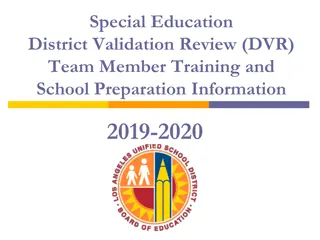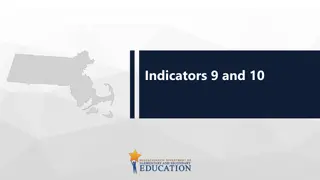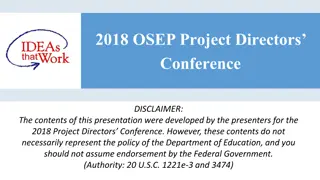Understanding Special Education Funding Compliance and MOE Requirements
Explore the essential aspects of special education funding, including Maintenance of Effort (MOE) requirements, key acronyms, compliance rules, and objectives of the funding module. Learn about the importance of MOE, excess costs, and how federal funding is determined based on compliance standards. Discover the state's role in ensuring proper allocation of funds for special education services.
Download Presentation

Please find below an Image/Link to download the presentation.
The content on the website is provided AS IS for your information and personal use only. It may not be sold, licensed, or shared on other websites without obtaining consent from the author. Download presentation by click this link. If you encounter any issues during the download, it is possible that the publisher has removed the file from their server.
E N D
Presentation Transcript
Compliance and Special Education Funding What s MOE got to do with it? 1 Special Education Funding
Acronyms and Abbreviations ARRA American Recovery and Reinvestment Act of 2009 CEIS Coordinated Early Intervening Services FASRG Financial Accountability System Resource Guide (FAR Guide) IDEA Individuals with Disabilities Education Improvement Act of 2004 IEP Individualized Education Program FSP Foundation School Program LEA Local Education Agency (District or Charter) NOGA Notice of Grant Award 2 Special Education Funding
Acronyms and Abbreviations MOE Maintenance of Effort PEIMS Public Education Information Management System SAAH Student Attendance Accounting Handbook SOF Summary of Finances SSA Shared Services Arrangement TEA Texas Education Agency TEASE Texas Education Agency Secure Environment USDE United States Department of Education 3 Special Education Funding
Key Terms Maintenance of Effort ( MOE) Excess Costs Coordinated Early Intervening Services (CEIS) Desk Audit Supplement Supplant Voluntary Departure High Cost Termination of Obligation EDGAR Icon made by Yannick from www.flaticon.com is licensed under Creative Commons BY 3.0. 4 Special Education Funding
Objectives of this Module State Special Education Funding Compliance 52% Rule Federal Special Education Funding Compliance Determination of Excess Cost to Establish Need of Federal Funding Maintenance of Effort (MOE) IDEA Funding Audits/Reviews Icon made by Freepik from www.flaticon.com is licensed under Creative Commons BY 3.0. 5 Special Education Funding
State Special Education Funding Compliance At least 52% of state funds generated for special education must be spent in support of direct special education services. (19 TAC 89.1121 (d) Distribution of State Funds and 19TAC 89.1125 Allowable Expenditures of State Special Education Funds 6 Special Education Funding
What Constitutes 52% of the State Special Education Basic Allotment? Specific Enhanced Program Intent Codes (PIC) 7 Special Education Funding
What About the 48%? No more than 48% of each school district's Foundation School Program (FSP) special allotments may be expended for indirect costs related to the following programs: special education... Administrative/indirect costs may be attributed to the following expenditure function codes 34--Student Transportation 41--General Administration 81--Facilities Acquisition and Construction Function 90 series of the general fund, as defined in the TEA publication, Financial Accountability System Resource Guide 8 Special Education Funding
What if we dont spend it all? If state special education funds are carried over from one year to the next, entire amount must be budgeted and expended on direct costs . Administrative costs may not be taken from carryover funds 9 Special Education Funding
Are we compliant? Maybe! State special education entitlement could go down one year (Example: poor attendance of students identified for special education services or significant changes to instructional arrangement FTEs) Could satisfy the 52% requirement, but have a problem with maintaining effort for federal MOE purposes Therefore, compliance with 52% Rule is not the same as compliance with federal MOE State special education dollars used to calculate the 52% requirement are part of the MOE formula, but only part 10 Special Education Funding
But our auditor says. Remember that this criteria of 52 % is the current standard by which the auditor will determine compliance for the state special education allotment expenditures. Compliance with the 52% rule is not a comparison of local/state support for the program from one year to the next. 11 Special Education Funding
Federal Compliance 12 Special Education Funding
Eligibility to Apply for Federal Funds The LEA is eligible to apply for a special education grant if: The LEA does not receive sufficient funds, including state and federal funds, for the child with disabilities to pay for the special education services provided to the child; or The LEA does not receive sufficient funds, including state funds and federal funds, for all children with disabilities in the LEA to pay for the special education services to the child TEC 29.018 (b-e) The receipt of special education funds must be contingent upon the operation of an approved comprehensive special education program in accordance with state and federal laws and regulations. TAC 89.1121(d) 13 Special Education Funding
Federal MOE and other IDEA-B Fiscal Compliance Requirements Excess Costs MOE and CEIS CEIS: an LEA may use up to 15% of the IDEA-B funds for any fiscal year to develop and implement K-12 services for general education students who need additional academic and/or behavioral support Excess costs are those federal funds necessary to provide the program above and beyond those per- student state and local funds expended the previous year Focuses on special education state and local expenditures in the current year as compared to the previous year 14 Special Education Funding
Part B Excess Cost Education Department Federal Administrative Regulations(EDGAR) and IDEA Subpart F: What are the administrative responsibilities of the sub-grantee? 34 CFR 76.700 : Compliance with statutes , regulations and applications 34 CFR 76.731: Records related to compliance 15 Special Education Funding
How Do I Establish a Need for Federal Funds? Excess Costs The excess cost requirement mandates how much the LEA must expend in state and local funds before it may begin expending IDEA- B grant funds. Focuses on per-student spending in special education as compared to per-student spending across all students. IDEA-B grant funds must be used only to pay the excess costs of providing special education and related services to students with disabilities. ( 34 CFR 300.202(a)(2). An LEA must spend at least the average annual per-student expenditure in an LEA during the preceding school year for an elementary or secondary school student with a disability before IDEA-B funds are used to pay the excess costs of providing special education and related services. (34 CFR Appendix A to Part 300) http://tea.texas.gov/index2.aspx?id=2147499857 16 Special Education Funding
Worksheet for Excess Costs H E H E L L H E L P P P Excess Cost Worksheet - Elementary (select) Grades: Previous year's expenditures from all sources, for all elementary school students, minus capital outlay and debt service State and local funds Federal funds 0 0 0 Total Capital outlay Debt service 0 0 0 Total 0 Total adjusted previous year's expenditures Previous year's elementary school expenditures from: IDEA, Part B ESEA, Title I, Part A ESEA, Title III, Parts A and B State and local special education funds State and local funds for programs under ESEA Title I, Part A, and ESEA Title III, Parts A and B 0 0 0 0 0 0 Total Previous elementary school enrollments: Average number of elementary students enrolled, including students with disabilities 0 Average number of elementary students with disabilities enrolled in the current year 0 Calculation results: Average annual expenditure per elementary student 0 Minimum amount the LEA must spend for the education of elementary students with disabilities before using IDEA Part B funds 0 17 Special Education Funding
Excess Costs Activity Step 1: Determine the total amount of expenditures for elementary school students from all sources local, State and Federal (including IDEA-B) in the preceding school year. Exclude capital outlay and debt services. State and local tax funds Federal funds Total Expenditures $6,500,000 $600,000 $7,100,000 Less capital outlay and debt service relating to the education of elementary school students Total Adjusted Expenditures - 60,000 $7,040,000 18 Special Education Funding
Step 2: Subtract from the Total Adjusted Expenditures amounts spent for: list of codes assigned to these expenditures). These are funds actually spent; not funds received and carried over to the current year. (a) IDEA B (b) ESEA, Title I, Part A (c) ESEA, Title III, Parts A and B State and local funds for children with disabilities, and (d) State or local funds for programs under ESEA, Title I, Part A, and Title III, Parts A and B. These are funds that the LEA actually spent, not funds received last year but carried over for the current school year. From the amount determined in Step 1, subtract the previous year expenditures identified below (see Appendix 1 for a (a) IDEA-B $200,000 (b) ESEA, Title I, Part A 250,000 (c) ESEA, Title III, Parts A & B 50,000 (d) State and local funds for children with disabilities 500,000 (e) State and local funds for programs under ESEA, Title I, Part A, and Title III, Parts A & B 150,000 Total Deductions $1,150,000 Total Adjusted Expenditures $7,040,000 Less Total Deductions -1,150,000 Total $5,890,000 19 Special Education Funding
Step 3: Determine the average annual per student expenditure for elementary school students by dividing the average number of students enrolled in the elementary schools of the LEA during the preceding year (including children with disabilities) into the total amount computed in Step 2. The amount obtained through this computation is the minimum amount the LEA must spend (on the average) for the education of each of its elementary school children with disabilities with fund sources other than IDEA-B. Total Amount from Step 2 Average number of students enrolled in preceding year (October PEIMS snapshot) Average annual per student expenditure $5,890,000 800 $7,362 20 Special Education Funding
Step 4: Determine the total minimum amount of funds the LEA must spend for e education of its elementary school children with disabilities in the LEA (not including capital outlay and debt service) with fund sources other than IDEA-B by multiplying the number of elementary school children with disabilities in the LEA times the average annual per student expenditure obtained in Step 3. Funds under IDEA-B can only be used for excess costs over and above this minimum. Number of students with disabilities in the LEA's elementary schools in the current year (October PEIMS snapshot) 100 Average annual per student expenditure (obtained from Step 3) x $7,362 Total minimum amount of funds the LEA must spend for the education of children with disabilities enrolled in the LEA's elementary schools with fund sources other than IDEA-B $736,200 21 Special Education Funding
But The excess cost requirement does not prevent an LEA from using IDEA-B funds to pay for all of the costs directly attributable to the education of a child with a disability in any of the ages 3, 4, 5, 18, 19, 20, or 21, if no local or State funds are available for nondisabled children of these ages. The LEA must comply with the non-supplanting and other requirements of this part in providing the education and services for these children. 22 Special Education Funding
Supplement not Supplant Funds provided to the LEA under IDEA-B must not be used to reduce the level of expenditures for the education of children with disabilities made by the LEA from local funds below the level of those expenditures for the preceding fiscal year. Icon made by Freepik from www.flaticon.com is licensed under Creative Commons BY 3.0. 23 Special Education Funding
Requirements for Compliance: MOE The LEA budgets for the education of children with disabilities from local or combination of local and state funds; Spends funds for the same purpose as the most recent prior year for which information is available; and Ensures that the amount of local funds budgeted is at least the same, either in total or per capita, as the amount the LEA spent for that purpose in the most recent fiscal year for which information is available. 24 Special Education Funding
MOE for Fiscal Year 2014 and Beyond TEA has published IDEA-B LEA Maintenance of Effort Guidance Handbook which provides a detailed description of the steps that TEA will use to calculate an LEA s compliance with the MOE requirement. Please note that beginning with fiscal year 2014, the PIC 99 allocation is not used in the MOE calculation. For MOE calculation for fiscal year 2013, allocated funds will be used to determine MOE compliance with previous year. http://tea.texas.gov/Finance_and_Grants/Grants/Federal_Fiscal_Compl iance_and_Reporting/IDEA_Fiscal_Compliance/IDEA- B_LEA_Maintenance_of_Effort/ 25 Special Education Funding
34 CFR 300.203 provides the following four methods for determining whether an LEA has met the IDEA-B MOE requirement: 1. The total amount the LEA expended in state and local funds must equal or exceed the amount it expended from those sources for special education during the previous fiscal year. 2. The per-pupil amount the LEA expended in state and local funds must equal or exceed the amount it expended per capita from those sources for special education during the previous fiscal year. 3. The total amount the LEA expended in local funds must equal or exceed the amount it expended from that source for special education during the previous fiscal year. 4. The per-pupil amount the LEA expended in local funds must equal or exceed the amount it expended per capita from that source for special education during the previous fiscal year. An LEA only needs to pass one of the four tests to be compliant. 26 Special Education Funding
If the LEA was noncompliant in maintaining effort in the preceding year, then the current year must be compared to the second preceding year rather than the preceding year when the LEA was noncompliant. For example, if the LEA was noncompliant in the fiscal year 2013 final determination, then the fiscal year 2014 determination must compare fiscal year 2014 to fiscal year 2012. 27 Special Education Funding
Consequences for Noncompliance If an LEA fails all four tests, it will be notified of its preliminary determination of noncompliance and given the opportunity to respond by claiming allowable federal exceptions, voluntary MOE reduction, and/or requesting state reconsiderations. If an LEA does not have sufficient allowable federal exceptions, a voluntary MOE reduction, and/or state reconsiderations to offset the decline in fiscal effort, the LEA must refund to TEA the amount by which the LEA failed to maintain effort (i.e., the difference between its prior and current year expenditures on students with disabilities after all applicable federal exceptions, voluntary MOE reduction, and state reconsiderations have been applied). If the refund amount exceeds the LEA's IDEA-B maximum entitlement for the fiscal year under determination, the LEA will only be required to refund the amount up to the LEA s maximum entitlement. The repayment must be made from nonfederal funds or from funds for which accountability to the federal government is not required, that is, from state and/or local funds. 28 Special Education Funding
Federal Exemptions The LEA may reduce the level of its state and/or local expenditures below the level of those expenditures for the preceding fiscal year only if the reduction is attributable to any of the following: (a) The voluntary departure, by retirement or otherwise, or departure for just cause, of special education or related services personnel. (b) A decrease in the enrollment of children with disabilities. (c) The termination of the obligation of the agency, consistent with this part, to provide a program of special education to a particular child with a disability that is an exceptionally costly program, as determined by the State Education Agency (SEA), because the child (1) Has left the jurisdiction of the agency; (2) Has reached the age at which the obligation of the agency to provide FAPE to the child has terminated; or (3) No longer needs the program of special education. (d) The termination of costly expenditures for long-term purchases, such as the acquisition of equipment or the construction of school facilities. (e) The assumption of cost by the high cost fund operated by the SEA under34 CFR 300.704(c). 34 CFR 300.204 29 Special Education Funding
Documentation for Exceptions LEAs will complete TEA s standardized assertion forms to document any reductions attributable to the allowable causes described above. The assertion forms will be uploaded into the Grants and Federal Fiscal Compliance (GFFC) Reports and Data Collections application available in TEASE/TEAL. 30 Special Education Funding
Departure of Personnel In order for the level of state and/or local expenditures to be reduced on the basis of departure of personnel, the LEA must provide the following source documentation: Source payroll record (e.g., personnel action form, resignation letter signed and dated by the employee) indicating the reasons why the employee departed the LEA Year-to-date payroll distribution journal Employee s State Board of Educator Certification (SBEC) record (i.e., certification) Employee s signed and dated job description 31 Special Education Funding
Departure of Personnel In addition, the following conditions must be satisfied: Departed personnel may no longer be employed by the LEA. If a special education teacher has been reassigned to other duties within the LEA, the reassignment does not qualify the LEA to claim the departure of personnel exception. The departure must be voluntary (that is, the employee resigned or retired) or for just cause (the employee was terminated as the result of misconduct or negligence). If the LEA reduces the number of special education personnel as the result of a reduction in force, the LEA may not claim the departure of personnel exception. The LEA may not claim the departure of personnel exception when releasing or failing to renew the contract of a probationary employee, as neither of those cases meets the just cause requirement. 32 Special Education Funding
Decrease in Enrollment of Children with Disabilities TEA automatically accounts for a decrease in the enrollment of children with disabilities when calculating the LEA s IDEA-B MOE in the following two ways: 1. If the number of students with disabilities decreases, and per-pupil special education expenditures remain the same or increase, the LEA will pass the second and fourth tests described in the Methods of Determining Compliance section. 2. In addition, TEA implements allowable flexibility to reduce the refund due by the percentage decrease in enrollment of children with disabilities from the preceding comparison year to the most recent year. For example, if the special education enrollment in the LEA decreased by 5% and the LEA was determined to be noncompliant, then the refund due would be decreased by 5%. This reduction is reflected on the LEA s MOE report. 33 Special Education Funding
Termination of Obligation In order for the level of state and/or local expenditures to be reduced because the LEA no longer has an obligation to serve a child with an exceptionally costly program, the LEA must provide the following supporting documentation: A schedule summarizing the total costs for each special education student that participated in an exceptionally costly program. The schedule must reconcile to the LEA s detailed general ledger and source records which must include the fund/net asset code and object code for each cost description. A detailed general ledger and source records supporting costs identified on the summary schedule provided. TEA may also request a student s individualized education program (IEP). (If the IEP is requested, the LEA must provide it to TEA through a secure transmission method (provided by TEA) within 24 hours of the request.) 34 Special Education Funding
Termination of Obligation An exceptionally costly program for serving a student with a disability is defined as an amount greater than the average per pupil expenditure (as defined in section 9101 of the ESEA) in Texas. Examples of reductions in an exceptionally costly program include, but are not limited to, the following: A student in a residential placement graduates or moves out of the LEA. A residential facility closes. A charter school or another school district begins providing educational services for a student. A student with a high number/level of personnel assigned to implement the student s individualized education program (IEP) leaves the LEA. Such students would include but are not limited to students who are identified as deaf, blind, deaf-blind, autistic, medically fragile, emotionally disturbed, or having a severe disability across eligibility categories. A settlement agreement/corrective action ends. 35 Special Education Funding
Termination of Costly Expenditures In order for the level of state and/or local expenditures to be reduced because of a termination of costly expenditures for long-term purchases, the LEA must provide the following supporting documentation: A schedule listing all of the items purchased, description of the items purchased, and the general ledger classification of the purchases, i.e., fund/net asset code, function code and object code. The schedule must agree to the LEA s detailed general ledger and source records, which must include the fund/net asset code and object code. A detailed general ledger and source records supporting the costs identified on the summary schedule provided. 36 Special Education Funding
Assumption of Cost by High Cost Fund In order for the level of state and/or local expenditures to be reduced because of assumption of cost by the high cost fund operated by TEA, meaning the expenditure in the current year was charged to the IDEA-B High Cost grant received from TEA, the LEA must provide the following supporting documentation: A detailed general ledger for the previous school year indicating the cost was previously recorded under fund code 199 or 420. A detailed general ledger for the current school year indicating the cost was subsequently recorded under fund code 226 (High Cost Grant). The source records supporting costs identified on the detailed general ledgers. 37 Special Education Funding
Voluntary Reduction of MOE PL 108-446, Section 613(a)(2)(C)(i)for any fiscal year for which the allocation received by an LEA under section 611(f) exceeds the amount received for the previous fiscal year, the LEA may reduce the level of expenditures otherwise required by subparagraph (A)(iii) by not more than 50% of the amount of such excess. However 38 Special Education Funding
Voluntary Reduction 1. To be eligible : The LEA must meet each of the state targets for the five SPP compliance indicators (9, 10, 11, 12, and 13) and Have a LEA Determination Level of Meets Requirements , and Is not identified as having significant disproportionality. 2. The LEA will need to provide : Form B: Assertion of Eligibility for Adjustment to Local Fiscal Effort and supporting documentation (now in e-grant application)) 3. Will need to demonstrate and have evidence of eligibility: Actual amount of adjustment The amount of the adjustment expended on NCLB activities 39 Special Education Funding
PL 108-446, Section 613(a)(2)(C)(ii) If an LEA exercises the authority under clause (i), the LEA shall use an amount of local funds equal to the reduction in expenditures under clause (i) to carry out activities authorized under the Elementary and Secondary Education Act. 40 Special Education Funding
Activities authorized under the Elementary and Secondary Education Act (ESEA) Parental Involvement Activities Drop out Prevention Programs for At-Risk Children and Youth Family Literacy Services Activities to Promote Family Support for Higher Education Mentor Programs 41 Special Education Funding
Reporting The reporting of any MOE Reduction on the Special Education Consolidated Grant application is only applicable to the Voluntary MOE reduction for the grant application year. Remember: If the LEA failed to maintain effort (received a letter of finding for MOE noncompliance), the LEA must not report the noncompliance amount on the Special Education Consolidated Grant application. MOE non-compliance is not Voluntary MOE Reduction. 42 Special Education Funding Icon made by Freepik from www.flaticon.com is licensed under Creative Commons BY 3.0.
Relationship between Voluntary Reduction of MOE and CEIS There are two relationships between the Voluntary Reduction option and CEIS: 1. Choosing to voluntarily reserve IDEA-B funds for CEIS can limit the amount the LEA voluntarily reduces MOE 2. Choosing to voluntarily reduce MOE can limit the amount the LEA voluntarily reserves for CEIS 43 Special Education Funding
44 Special Education Funding
CEIS Remember: If the LEA intends to use CEIS funds and is eligible for voluntary reduction of MOE, both must be planned for at the same time to ensure compliance. If doing both the LEA must determine which amount is the lesser; combined, the CEIS set-aside amount and MOE reduction may not exceed that lesser amount. If the LEA is only doing one or the other, it is unnecessary to consider the interconnection between CEIS and MOE. 45 Special Education Funding
Federal Funds That May be Considered as State or Local Funds In years when the federal government provides special and/or additional federal funds that TEA designates as state or local funds (such as ARRA SFSF, fund code 266), those specific funds will be automatically included in the total aggregated expenditures by function code for each respective compliance year in the MOE calculation. 46 Special Education Funding Icon made by Freepik from www.flaticon.com is licensed under Creative Commons BY 3.0.
Significant PEIMS Errors USDE approved TEA s request to reconsider significant PEIMS errors. Significant is defined as corrections that change the LEA s compliance status To meet this definition the LEA must enter its self-reported corrected data in to TEA s IDEA-B LEA MOE calculation tool and the results must reflect a change in the compliance status. If a change results, TEA will recalculate a revised compliance determination using the corrected data. Any decision to use revised data will not change the official PEIMS data. The official PEIMS data is final and remain unchanged on all TEA products and reports that rely on this information 47 Special Education Funding
Possible Consequences of a State Reconsideration Request Due to Significant PEIMS Errors TEA s Federal Fiscal Compliance and Reporting (FFCR) division will make the following notification of erroneous data submission: Division of Financial Compliance possible increased risk of audit, investigation an/or review Division of State Funding-possible effect on state funding Division of Federal Fiscal Monitoring- possible identification as high-risk resulting in a review of all reimbursements across grants Office of Statewide Education Data Systems- possible identification as high-risk Department of Accreditation and School Improvement- risk for investigation/review Division of Enforcement Coordination and Governance-possible recommendation for district-level interventions/sanctions based on findings 48 Special Education Funding
Lets Talk METHODOLOGY The methodology for calculating IDEA-B MOE compliance is based on both federal and state requirements. 34 CFR 300.203 provides the following four methods for determining compliance: The total amount the LEA expended in state and local funds must equal or exceed the amount it expended from those sources for special education during the previous fiscal year. The per-pupil amount the LEA expended in state and local funds must equal or exceed the amount it expended per capita from those sources for special education during the previous fiscal year. The total amount the LEA expended in local funds must equal or exceed the amount it expended from that source for special education during the previous fiscal year. The per-pupil amount the LEA expended in local funds must equal or exceed the amount it expended per capita from that source for special education during the previous fiscal year. 49 Special Education Funding
Calculating State and Local Funds To calculate the total amount expended in state and local funds, TEA uses expenditures reported on PEIMS Record 032, Fund Code 199 for school districts, or 420 for charter schools, coded to program intent code (PIC) 23 and PIC 33. TEA also includes PEIMS Record 033, Fund Code 437 Shared Services Arrangement Special Education for Shared Service Arrangements (Type 11) expenditures. As described in the Federal Funds That May be Considered as State or Local Funds section, in years when the federal government provides special and/or additional federal funds that TEA designates as state or local funds (such as ARRA SFSF, fund code 266), those specific funds will be automatically included in the total aggregated expenditures by function code for each respective compliance year in the MOE calculation. 50 Special Education Funding


